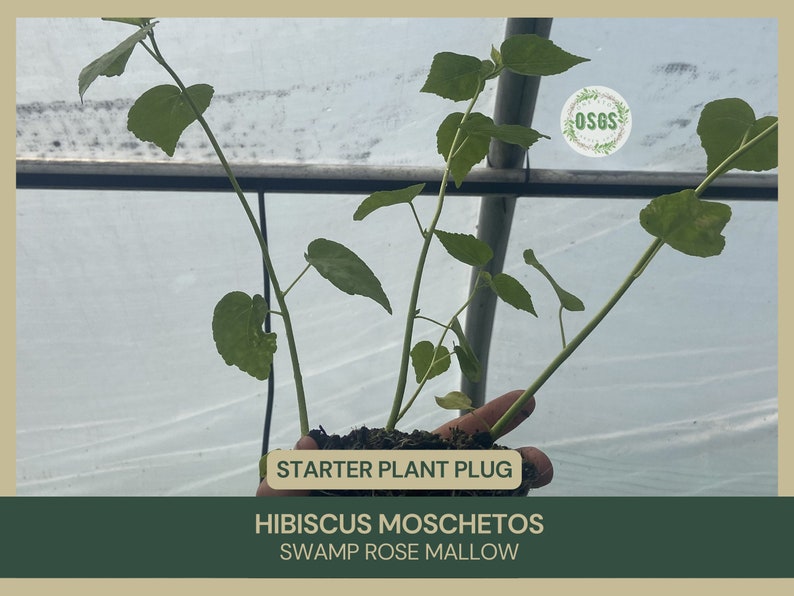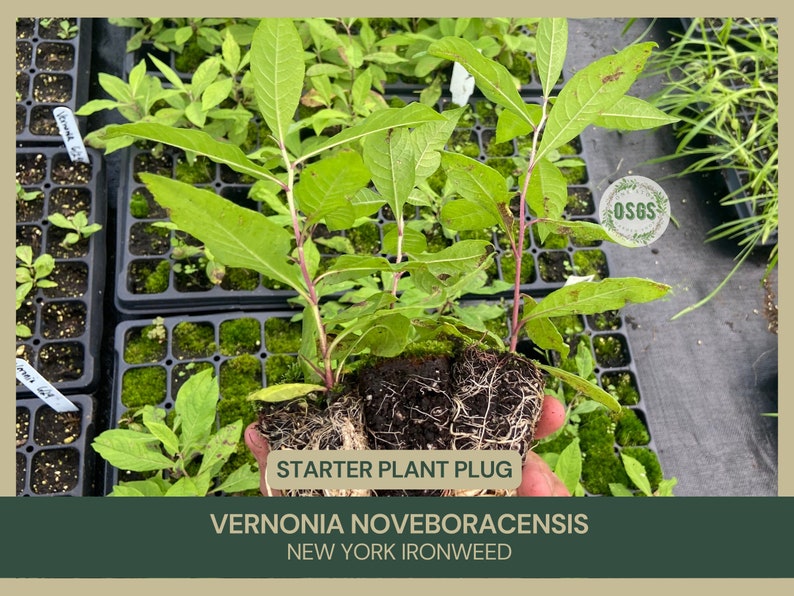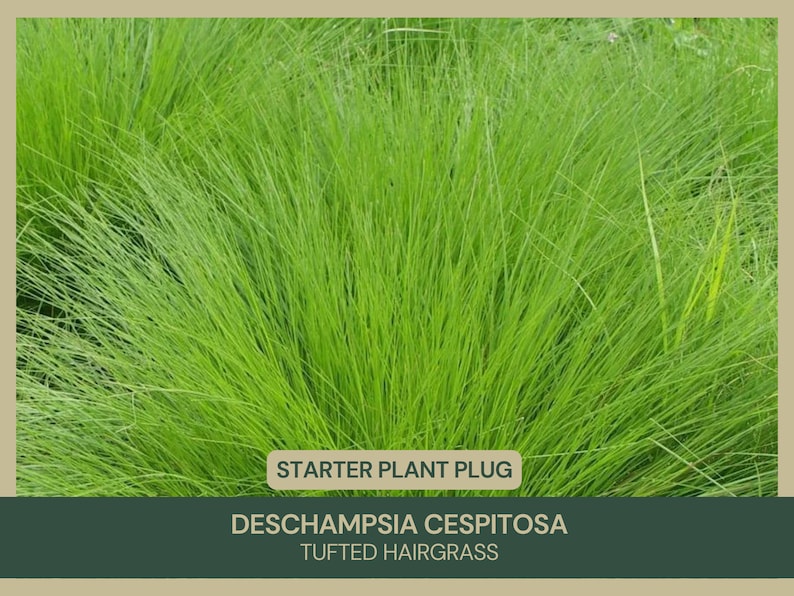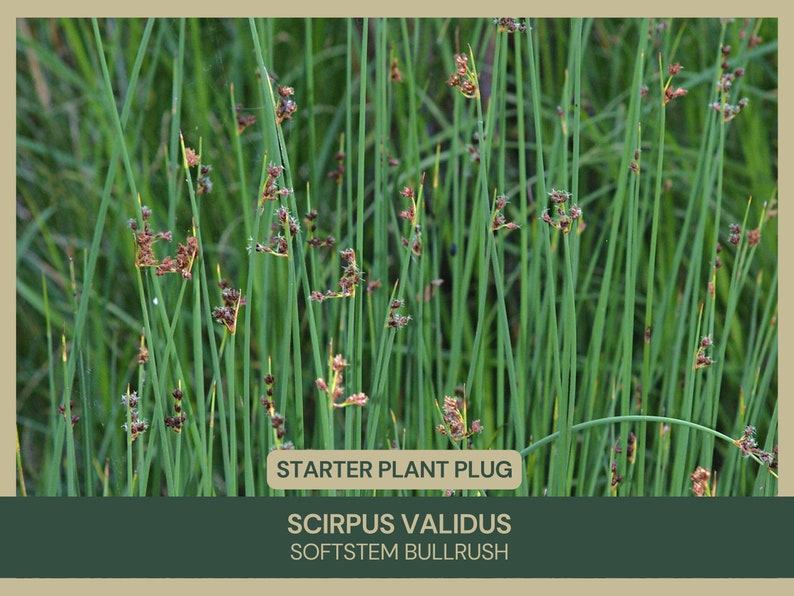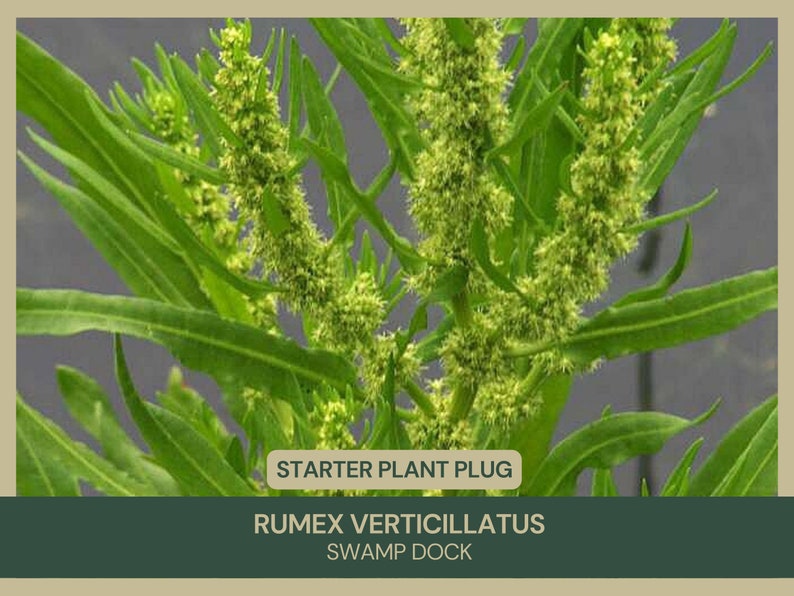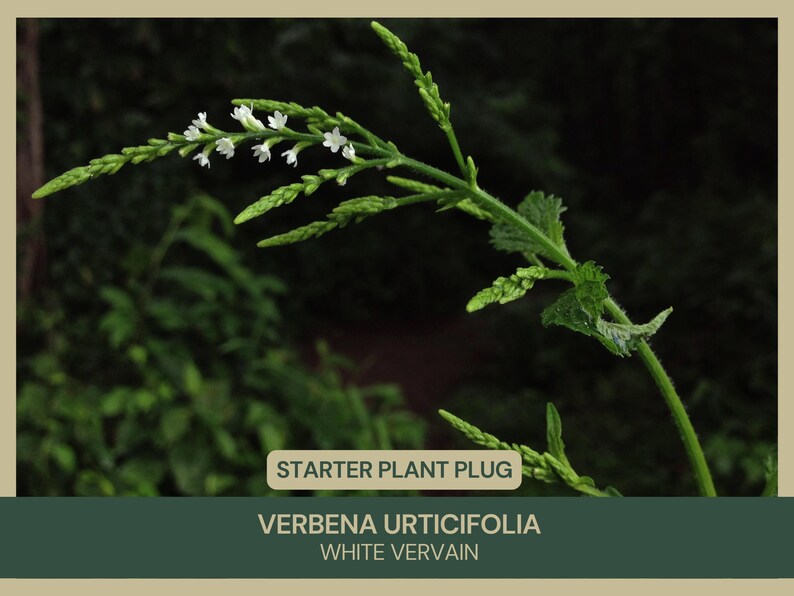Search Results
181 results found with an empty search
- Monarda didyma 'Bee-Merry'
<<< Back Monarda didyma 'Bee-Merry' Common name: Bee-Merry Bee Balm Bee Balm Brilliance: Cultivating Monarda Didyma 'Bee-Merry' Message us Related Videos Etsy Shop eBay Shop Monarda didyma 'Bee-Merry', a striking cultivar of Bee Balm, is celebrated for its vibrant red flowers and its ability to attract pollinators like bees, butterflies, and hummingbirds. This perennial is a colorful addition to any garden, offering both visual appeal and ecological benefits. Features bright red, tubular flowers that bloom atop tall stems in mid to late summer. Known for its minty, aromatic foliage and striking floral display. Ideal for perennial borders, pollinator gardens, and as a naturalized planting. Plant Care Effective care is crucial for the robust growth and flowering of 'Bee-Merry'. Sunlight: This plant prefers full sun for optimal growth, yet it can also tolerate partial shade, providing flexibility in garden placement. Soil: Rich, well-drained soil is ideal for its thriving growth, essential for its health and vigor. Watering: Regular watering is crucial, particularly in dry conditions, though the plant becomes drought-tolerant once established. Spacing: When planting, it's best to space them about 18-24 inches apart, allowing each plant enough room to reach its mature size. Planting and Propagation Planting and propagating 'Bee-Merry' adds vibrant color and life to your garden. Plant in spring or early fall for optimal growth. Propagate by division in spring or autumn. Can be grown from seed, but division ensures consistency of the 'Bee-Merry' traits. Pests and Diseases 'Bee-Merry' is generally hardy but can be susceptible to some common issues. Watch for powdery mildew; good air circulation and proper spacing can prevent this. Susceptible to rust and leaf spot diseases in humid conditions. Monitor for aphids and treat with insecticidal soap if necessary. Feeding and Fertilizing Regular feeding will support the growth and blooming of 'Bee-Merry'. Apply a balanced fertilizer in the spring as new growth appears. Avoid over-fertilizing, as this can lead to excessive foliage at the expense of flowers. Enriching the soil with compost can improve plant health and bloom production. Seasonal Care Seasonal care adjustments are important for the health of your 'Bee-Merry'. Deadhead spent flowers to encourage more blooms and maintain a tidy appearance. In fall, cut back the plant to help control disease and encourage fresh growth in spring. Apply a light mulch in fall for winter protection in colder climates. Plant Uses Monarda didyma 'Bee-Merry' is versatile in garden design and ecological roles. An excellent choice for attracting and supporting pollinators in the garden. Perfect for creating vibrant displays in borders, cottage gardens, and wildlife gardens. The aromatic leaves can be used to make herbal tea. Varieties and Cultivars While 'Bee-Merry' is a specific cultivar, exploring other varieties of Monarda can add diversity. Monarda fistulosa offers lavender-pink flowers and a more wild, natural appearance. Monarda 'Jacob Cline' is known for its large, bright red flowers and resistance to mildew. Experiment with different Monarda varieties for a range of colors and plant heights. Growing Tips and Tricks Some additional insights can enhance your experience of growing 'Bee-Merry'. Thrives in a sunny location but appreciates afternoon shade in hot climates. Ensure good soil drainage to prevent root rot. Divide every 2-3 years to maintain plant vigor and control spread. Troubleshooting Common Problems Addressing common issues early can keep your 'Bee-Merry' healthy and thriving. If plants become leggy or sparse, they may need more sun or rejuvenation through division. Overly wet conditions can lead to root diseases; ensure proper soil drainage. Control the spread by removing any unwanted runners or offshoots. Read our blogs for more gardening tips! White Turtlehead: A Native Plant with Ecological Significance Understanding the Ecological Significance of Chelone glabra Chelone glabra, commonly known as White Turtlehead, is a plant with deep... Cardinal Flower: A Magnet for Hummingbirds and Butterflies The Cardinal Flower (Lobelia cardinalis), a spectacular beacon in any garden, is renowned for its striking red blooms and unique allure... Chelone glabra in Folklore and Traditional Medicine Exploring the Roots of White Turtlehead in Cultural Narratives and Healing Practices Chelone glabra, commonly known as White Turtlehead,... Culinary Adventures with Wetland Plants: Recipes and Cooking Tips Wetlands are often overlooked when it comes to sourcing ingredients for culinary masterpieces. But did you know that these lush... A Burst of Color: Cultivating Echinacea purpurea in Native Gardens The Allure of the Purple Coneflower Echinacea purpurea, commonly known as Purple Coneflower, is more than just a vibrant addition to your...
- Salvia guaranitica 'Black & Blue'
<<< Back Salvia guaranitica 'Black & Blue' Common name: Anise-scented sage Black & Blue Beauty: Cultivating Salvia Guaranitica 'Black & Blue' in Your Garden Message us Related Videos Etsy Shop eBay Shop Salvia guaranitica 'Black & Blue', commonly known as Anise-Scented Sage, is renowned for its deep blue flowers and contrasting black calyces. This perennial sage is a standout in any garden, offering vibrant color and attracting a variety of pollinators. Boasts eye-catching cobalt blue flowers from mid-summer to frost. Known for its long blooming season and attractive, aromatic foliage. Perfect for adding a bold splash of color to borders, wildlife gardens, and as a container plant. Plant Care Effective care is crucial for the thriving growth and extended blooming of 'Black & Blue'. Sunlight: This plant flourishes in full sun, enhancing its growth and vitality, but it's also capable of tolerating partial shade. Soil: Optimal growth is achieved in well-drained, fertile soil, which is crucial for its health and development. Watering: It becomes drought-tolerant once established, though regular watering is important during its initial growth phase. Spacing: Plant them about 18-24 inches apart to ensure they have enough space for their mature growth. Planting and Propagation Planting and propagating 'Black & Blue' adds striking color and dynamic appeal to your garden. Plant in spring or early fall for the best establishment. Propagate by division in spring or by taking stem cuttings in summer. Seeds can be sown, but division or cuttings ensure true-to-type plants. Pests and Diseases 'Black & Blue' is generally robust and resistant to common pests and diseases. Monitor for pests like aphids and treat with insecticidal soap if necessary. Resistant to most diseases; ensure good air circulation to prevent fungal issues. Avoid overwatering to prevent root rot. Feeding and Fertilizing Regular feeding supports the vigorous growth and flowering of 'Black & Blue'. Apply a balanced, slow-release fertilizer in early spring. Avoid over-fertilizing, which can lead to excessive foliage growth. Incorporating compost into the soil can improve plant health and bloom production. Seasonal Care Seasonal adjustments are important for the year-round health of your 'Black & Blue'. Deadhead spent blooms to encourage more flowering and maintain a neat appearance. Cut back the plant in late fall or early spring to promote healthy new growth. In colder zones, apply a light mulch in fall to protect the roots. Plant Uses Salvia guaranitica 'Black & Blue' serves multiple roles in the garden. An excellent choice for attracting bees, butterflies, and hummingbirds. Perfect for creating a bold statement in perennial borders and mixed beds. Suitable for container gardening, adding vertical interest and vibrant color. Varieties and Cultivars Explore other Salvia varieties for a range of colors and sizes. Salvia guaranitica 'Amistad' boasts deep purple flowers with black calyces. Salvia microphylla 'Hot Lips' features unique red and white bi-colored blooms. Combine various Salvia species for a diverse and colorful garden display. Growing Tips and Tricks Some additional insights can enhance your experience of growing 'Black & Blue'. Thrives in a sunny location with well-drained soil for optimal flowering. Tolerates heat and humidity, making it suitable for a variety of climates. Regular pruning can encourage bushier growth and more prolific blooming. Troubleshooting Common Problems Addressing common issues early can keep your 'Black & Blue' healthy and flourishing. Leggy growth may indicate a need for more sunlight or mid-season pruning. Overly wet conditions can lead to root problems; ensure proper soil drainage. Control spread by deadheading regularly and maintaining the desired plant shape through pruning. Read our blogs for more gardening tips! White Turtlehead: A Native Plant with Ecological Significance Understanding the Ecological Significance of Chelone glabra Chelone glabra, commonly known as White Turtlehead, is a plant with deep... Cardinal Flower: A Magnet for Hummingbirds and Butterflies The Cardinal Flower (Lobelia cardinalis), a spectacular beacon in any garden, is renowned for its striking red blooms and unique allure... Chelone glabra in Folklore and Traditional Medicine Exploring the Roots of White Turtlehead in Cultural Narratives and Healing Practices Chelone glabra, commonly known as White Turtlehead,... Culinary Adventures with Wetland Plants: Recipes and Cooking Tips Wetlands are often overlooked when it comes to sourcing ingredients for culinary masterpieces. But did you know that these lush... A Burst of Color: Cultivating Echinacea purpurea in Native Gardens The Allure of the Purple Coneflower Echinacea purpurea, commonly known as Purple Coneflower, is more than just a vibrant addition to your...
- Hibiscus moschetos
<<< Back Hibiscus moschetos Common name: Swamp Rose Mallow Growing Swamp Hibiscus: A Gardener's Guide to Hibiscus Moscheutos Message us Related Videos Etsy Shop eBay Shop Hibiscus moscheutos, also known as Swamp Hibiscus or Rose Mallow, is a striking perennial known for its large, showy flowers and robust growth. It's a favorite in gardens for its ability to add dramatic color and tropical flair. Features large, vibrant flowers in shades of pink, red, or white, often with a contrasting eye. Ideal for water gardens, rain gardens, and moist areas. Blooms in late summer to early fall, providing late-season interest. Plant Care Proper care is essential for the health and vibrancy of Swamp Hibiscus. Sunlight: Achieves optimal flowering in full sun, ideal for vibrant and healthy blooms. Soil: Best in moist to wet soil conditions, but can adapt to standard garden soil with regular watering. Watering: Essential to maintain consistently moist soil, particularly crucial in dry periods. Spacing: Plants should be spaced 2-3 feet apart, ensuring enough room for their full growth and development. Planting and Propagation Planting and propagating Swamp Hibiscus can add a touch of tropical beauty to your garden. Plant in spring or early fall. Propagate by division in spring or by taking cuttings in summer. Seeds can be sown but may not always come true to parent plant characteristics. Pests and Diseases Swamp Hibiscus is generally robust but can be susceptible to some pests and diseases. Watch for Japanese beetles and aphids; treat with insecticidal soap or neem oil if necessary. Can be affected by fungal diseases like rust and leaf spot in humid conditions. Ensure good air circulation and avoid overcrowding. Feeding and Fertilizing Regular feeding will support the vigorous growth and flowering of Hibiscus moscheutos. Fertilize in early spring with a balanced, slow-release fertilizer. A second application of fertilizer can be beneficial in mid-summer. Avoid over-fertilizing, which can lead to excessive foliage and fewer flowers. Seasonal Care Seasonal care adjustments will help your Swamp Hibiscus thrive throughout the year. Mulch around the base to retain moisture and regulate soil temperature. In colder zones, the plant may die back to the ground in winter; it will resprout in spring. Prune back dead stems in early spring to encourage new growth. Plant Uses Swamp Hibiscus is versatile and offers various uses in landscape design. Ideal for planting along pond edges, in rain gardens, or in moist borders. Its large, showy flowers make it a focal point in any garden setting. Can be planted in large containers for patio or terrace gardens. Varieties and Cultivars There are several varieties of Hibiscus moscheutos, each offering unique flower colors and sizes. 'Luna Red' features deep red blooms with a dark eye. 'Luna White' offers pure white flowers with a crimson center. Select varieties based on your preferred flower color and plant size. Growing Tips and Tricks Enhance your gardening experience with these tips for growing Swamp Hibiscus. Prefers a sunny location with moist soil for optimal flowering. Can tolerate short periods of flooding and is suitable for waterlogged areas. Deadhead spent flowers to encourage more blooms. Troubleshooting Common Problems Addressing issues promptly will ensure the health and beauty of your Swamp Hibiscus. Yellow leaves may indicate overwatering or poor drainage; adjust watering as needed. If the plant isn't flowering well, it might need more sunlight or fertilization. Protect from strong winds, as tall stems can be vulnerable to breaking. Read our blogs for more gardening tips! White Turtlehead: A Native Plant with Ecological Significance Understanding the Ecological Significance of Chelone glabra Chelone glabra, commonly known as White Turtlehead, is a plant with deep... Cardinal Flower: A Magnet for Hummingbirds and Butterflies The Cardinal Flower (Lobelia cardinalis), a spectacular beacon in any garden, is renowned for its striking red blooms and unique allure... Chelone glabra in Folklore and Traditional Medicine Exploring the Roots of White Turtlehead in Cultural Narratives and Healing Practices Chelone glabra, commonly known as White Turtlehead,... Culinary Adventures with Wetland Plants: Recipes and Cooking Tips Wetlands are often overlooked when it comes to sourcing ingredients for culinary masterpieces. But did you know that these lush... A Burst of Color: Cultivating Echinacea purpurea in Native Gardens The Allure of the Purple Coneflower Echinacea purpurea, commonly known as Purple Coneflower, is more than just a vibrant addition to your...
- Mentha x piperita f. citrata Basil
<<< Back Mentha x piperita f. citrata Basil Common name: Basil Mint Basil Mint: A Fusion of Flavors for Gardeners Growing Mentha x Piperita f. Citrata 'Basil' Message us Related Videos Etsy Shop eBay Shop Mentha x piperita f. citrata 'Basil', known as Basil Mint, is a unique herb that combines the refreshing qualities of mint with the savory essence of basil. It's an exciting addition to any culinary garden, offering versatility in both flavor and use. Features a delightful aroma and flavor that blends peppermint with subtle basil undertones. Produces small, lilac-colored flowers and has a vigorous growth habit. Ideal for culinary uses, herbal teas, and adding a fragrant touch to gardens and containers. Plant Care Effective care is key to the healthy growth and rich flavor of Basil Mint. Sunlight: This plant prefers full sun but can also grow well in partial shade, offering versatility in garden placement. Soil: It achieves its best growth in moist, well-drained soil, which is essential for its health. Watering: The soil should be kept consistently moist, as mint thrives in slightly damp conditions. Spacing: When planting, allow a space of about 18-24 inches between each plant to accommodate its spreading habit. Planting and Propagation Planting and propagating Basil Mint can add a unique flavor profile to your garden. Plant in spring after the last frost. Propagate by division in spring or autumn, or from stem cuttings. Can also be grown from seed, but division is more effective for maintaining the basil-mint flavor. Pests and Diseases Basil Mint, like other mint varieties, is generally hardy but can encounter some common garden pests. Watch for mint pests like aphids and spider mites; treat as necessary. Susceptible to rust and powdery mildew in humid conditions; ensure good air circulation. Avoid overwatering to prevent root rot. Feeding and Fertilizing Regular feeding is not typically necessary for Basil Mint. Lightly fertilize with an all-purpose fertilizer in spring if grown in poor soil. Over-fertilization can lead to excessive growth at the expense of flavor. Enriching the soil with compost can improve growth and flavor. Seasonal Care Seasonal adjustments help maintain the vitality of your Basil Mint. In colder climates, mulch around the base in fall for winter protection. Prune back in early spring to encourage fresh, flavorful growth. Mint can become invasive; consider planting in containers or using root barriers. Plant Uses Basil Mint is versatile in culinary and garden applications. Adds a unique flavor to teas, cocktails, and culinary dishes. Can be used as a fragrant ground cover or in containers for patios and balconies. Attracts pollinators with its flowers, enhancing garden biodiversity. Varieties and Cultivars While Mentha x piperita f. citrata 'Basil' is a specific variety, experimenting with other mint varieties can add diversity. Other mint varieties, like chocolate mint or pineapple mint, offer different flavor profiles and aromas. Mix and match with various herbs to create a versatile and aromatic herb garden. Growing Tips and Tricks Some additional tips can help you get the most out of growing Basil Mint. Thrives in a sunny location with well-draining soil. Regular harvesting or trimming encourages fuller, bushier growth. Be mindful of its spreading habit; contain its growth to prevent it from overtaking other plants. Troubleshooting Common Problems Addressing common issues early can keep your Basil Mint healthy. Yellowing leaves may indicate overwatering or poor drainage. If the plant is growing sparsely or leggy, it might need more sunlight. Control its spread by removing runners and keeping the plant contained. Read our blogs for more gardening tips! White Turtlehead: A Native Plant with Ecological Significance Understanding the Ecological Significance of Chelone glabra Chelone glabra, commonly known as White Turtlehead, is a plant with deep... Cardinal Flower: A Magnet for Hummingbirds and Butterflies The Cardinal Flower (Lobelia cardinalis), a spectacular beacon in any garden, is renowned for its striking red blooms and unique allure... Chelone glabra in Folklore and Traditional Medicine Exploring the Roots of White Turtlehead in Cultural Narratives and Healing Practices Chelone glabra, commonly known as White Turtlehead,... Culinary Adventures with Wetland Plants: Recipes and Cooking Tips Wetlands are often overlooked when it comes to sourcing ingredients for culinary masterpieces. But did you know that these lush... A Burst of Color: Cultivating Echinacea purpurea in Native Gardens The Allure of the Purple Coneflower Echinacea purpurea, commonly known as Purple Coneflower, is more than just a vibrant addition to your...
- Nepeta Grandiflora 'Summer Magic'
<<< Back Nepeta Grandiflora 'Summer Magic' Common name: Catmint Raspberry Wine Elegance: A Gardener's Guide to Cultivating Monarda Didyma 'Raspberry Wine Message us Related Videos Etsy Shop eBay Shop Monarda didyma 'Raspberry Wine', a stunning cultivar of Bee Balm, is prized for its vibrant raspberry-pink blooms and aromatic foliage. This perennial is a standout in gardens, attracting a variety of pollinators while providing striking visual appeal. Boasts lush, raspberry-pink flowers that bloom atop sturdy stems in mid to late summer. Known for its fragrant leaves and long-lasting, showy blooms. Perfect for adding a splash of color to perennial borders, wildlife gardens, and naturalized areas. Plant Care Effective care is essential for the flourishing growth and flowering of 'Raspberry Wine'. Sunlight: Ideally, this plant prefers full sun for optimal growth, but it has the adaptability to tolerate partial shade as well. Soil: It thrives in rich, well-drained soil, which is key to its healthy development. Watering: Regular watering is essential, particularly in times of dry spells, though the plant becomes drought-tolerant once fully established. Spacing: When planting, ensure to space them about 18-24 inches apart, allowing adequate room for their full growth. Planting and Propagation Planting and propagating 'Summer Magic' adds charm and color to your garden. Plant in the spring after the risk of frost has passed. Propagate by division in early spring or autumn. Stem cuttings can also be taken in late spring or early summer. Pests and Diseases 'Summer Magic' is generally robust and resistant to pests and diseases. Watch for common pests like aphids; treat with insecticidal soap if necessary. Resistant to many common diseases that affect catmint, including mildew. Proper spacing and well-drained soil help prevent most fungal issues. Feeding and Fertilizing Regular feeding is not typically necessary for 'Summer Magic'. Apply a light, balanced fertilizer in the spring if grown in poor soil. Over-fertilizing can lead to excessive foliage growth at the expense of flowers. Enriching the soil with compost at planting time can improve overall plant health. Seasonal Care Seasonal adjustments are important for the health of your 'Summer Magic'. Deadhead spent blooms regularly to encourage continued flowering. Cut back in late fall or early spring to promote vigorous new growth. In colder zones, a light mulch can be applied in fall for winter protection. Plant Uses Nepeta grandiflora 'Summer Magic' is versatile and serves multiple roles in the garden. Perfect for creating a low-maintenance, pollinator-friendly garden. Excellent in rock gardens, borders, and as a ground cover due to its mounding habit. The fragrant foliage is appealing in sensory gardens and can be used in herbal teas. Varieties and Cultivars Explore other Nepeta varieties for a range of colors and sizes. Nepeta faassenii offers a more sprawling habit with lavender-blue flowers. Nepeta racemosa 'Walker's Low' is known for its long bloom time and lavender-blue flowers. Mixing different Nepeta varieties can create a layered and long-blooming garden display. Growing Tips and Tricks Some additional tips can help you get the most out of growing 'Summer Magic'. Thrives in a sunny location with well-drained soil. Tolerates poor soil conditions and is an excellent choice for xeriscaping. Regular trimming can encourage a bushier growth habit and more blooms. Troubleshooting Common Problems Addressing common issues early can keep your 'Summer Magic' healthy and thriving. If plants become leggy, they may need more sun or a mid-season trim. Overly wet conditions can lead to root problems; ensure adequate soil drainage. Control its spread by deadheading before seeds mature, if self-seeding is a concern. Read our blogs for more gardening tips! White Turtlehead: A Native Plant with Ecological Significance Understanding the Ecological Significance of Chelone glabra Chelone glabra, commonly known as White Turtlehead, is a plant with deep... Cardinal Flower: A Magnet for Hummingbirds and Butterflies The Cardinal Flower (Lobelia cardinalis), a spectacular beacon in any garden, is renowned for its striking red blooms and unique allure... Chelone glabra in Folklore and Traditional Medicine Exploring the Roots of White Turtlehead in Cultural Narratives and Healing Practices Chelone glabra, commonly known as White Turtlehead,... Culinary Adventures with Wetland Plants: Recipes and Cooking Tips Wetlands are often overlooked when it comes to sourcing ingredients for culinary masterpieces. But did you know that these lush... A Burst of Color: Cultivating Echinacea purpurea in Native Gardens The Allure of the Purple Coneflower Echinacea purpurea, commonly known as Purple Coneflower, is more than just a vibrant addition to your...
- Vernonia noveboracensis
<<< Back Vernonia noveboracensis Common name: New York ironweed Message us Related Videos Etsy Shop eBay Shop Read our blogs for more gardening tips! White Turtlehead: A Native Plant with Ecological Significance Understanding the Ecological Significance of Chelone glabra Chelone glabra, commonly known as White Turtlehead, is a plant with deep... Cardinal Flower: A Magnet for Hummingbirds and Butterflies The Cardinal Flower (Lobelia cardinalis), a spectacular beacon in any garden, is renowned for its striking red blooms and unique allure... Chelone glabra in Folklore and Traditional Medicine Exploring the Roots of White Turtlehead in Cultural Narratives and Healing Practices Chelone glabra, commonly known as White Turtlehead,... Culinary Adventures with Wetland Plants: Recipes and Cooking Tips Wetlands are often overlooked when it comes to sourcing ingredients for culinary masterpieces. But did you know that these lush... A Burst of Color: Cultivating Echinacea purpurea in Native Gardens The Allure of the Purple Coneflower Echinacea purpurea, commonly known as Purple Coneflower, is more than just a vibrant addition to your...
- Deschampsia cespitosa
<<< Back Deschampsia cespitosa Common name: Tufted hairgrass Message us Related Videos Etsy Shop eBay Shop Read our blogs for more gardening tips! White Turtlehead: A Native Plant with Ecological Significance Understanding the Ecological Significance of Chelone glabra Chelone glabra, commonly known as White Turtlehead, is a plant with deep... Cardinal Flower: A Magnet for Hummingbirds and Butterflies The Cardinal Flower (Lobelia cardinalis), a spectacular beacon in any garden, is renowned for its striking red blooms and unique allure... Chelone glabra in Folklore and Traditional Medicine Exploring the Roots of White Turtlehead in Cultural Narratives and Healing Practices Chelone glabra, commonly known as White Turtlehead,... Culinary Adventures with Wetland Plants: Recipes and Cooking Tips Wetlands are often overlooked when it comes to sourcing ingredients for culinary masterpieces. But did you know that these lush... A Burst of Color: Cultivating Echinacea purpurea in Native Gardens The Allure of the Purple Coneflower Echinacea purpurea, commonly known as Purple Coneflower, is more than just a vibrant addition to your...
- Scirpus validus
<<< Back Scirpus validus Common name: Soft stem Bulrush Message us Related Videos Etsy Shop eBay Shop Read our blogs for more gardening tips! White Turtlehead: A Native Plant with Ecological Significance Understanding the Ecological Significance of Chelone glabra Chelone glabra, commonly known as White Turtlehead, is a plant with deep... Cardinal Flower: A Magnet for Hummingbirds and Butterflies The Cardinal Flower (Lobelia cardinalis), a spectacular beacon in any garden, is renowned for its striking red blooms and unique allure... Chelone glabra in Folklore and Traditional Medicine Exploring the Roots of White Turtlehead in Cultural Narratives and Healing Practices Chelone glabra, commonly known as White Turtlehead,... Culinary Adventures with Wetland Plants: Recipes and Cooking Tips Wetlands are often overlooked when it comes to sourcing ingredients for culinary masterpieces. But did you know that these lush... A Burst of Color: Cultivating Echinacea purpurea in Native Gardens The Allure of the Purple Coneflower Echinacea purpurea, commonly known as Purple Coneflower, is more than just a vibrant addition to your...
- Rumex verticillatus
<<< Back Rumex verticillatus Common name: Swamp Dock Message us Related Videos Etsy Shop eBay Shop Read our blogs for more gardening tips! White Turtlehead: A Native Plant with Ecological Significance Understanding the Ecological Significance of Chelone glabra Chelone glabra, commonly known as White Turtlehead, is a plant with deep... Cardinal Flower: A Magnet for Hummingbirds and Butterflies The Cardinal Flower (Lobelia cardinalis), a spectacular beacon in any garden, is renowned for its striking red blooms and unique allure... Chelone glabra in Folklore and Traditional Medicine Exploring the Roots of White Turtlehead in Cultural Narratives and Healing Practices Chelone glabra, commonly known as White Turtlehead,... Culinary Adventures with Wetland Plants: Recipes and Cooking Tips Wetlands are often overlooked when it comes to sourcing ingredients for culinary masterpieces. But did you know that these lush... A Burst of Color: Cultivating Echinacea purpurea in Native Gardens The Allure of the Purple Coneflower Echinacea purpurea, commonly known as Purple Coneflower, is more than just a vibrant addition to your...
- Monarda didyma 'Raspberry Wine'
<<< Back Monarda didyma 'Raspberry Wine' Common name: Monarda Didyma 'Raspberry Wine' Raspberry Wine Elegance: A Gardener's Guide to Cultivating Monarda Didyma 'Raspberry Wine Message us Related Videos Etsy Shop eBay Shop Monarda didyma 'Raspberry Wine', a stunning cultivar of Bee Balm, is prized for its vibrant raspberry-pink blooms and aromatic foliage. This perennial is a standout in gardens, attracting a variety of pollinators while providing striking visual appeal. Boasts lush, raspberry-pink flowers that bloom atop sturdy stems in mid to late summer. Known for its fragrant leaves and long-lasting, showy blooms. Perfect for adding a splash of color to perennial borders, wildlife gardens, and naturalized areas. Plant Care Effective care is essential for the flourishing growth and flowering of 'Raspberry Wine'. Sunlight: This plant thrives in full sun, which is ideal for its growth, yet it can also manage well in partial shade. Soil: Optimal growth is achieved in rich, well-drained soil, which is crucial for its health and development. Watering: Regular watering is important, especially during dry periods, but the plant becomes more drought-tolerant once it's established. Spacing: It's best to space the plants about 18-24 inches apart to ensure they have enough room for full growth. Planting and Propagation Planting and propagating 'Raspberry Wine' can bring vibrant color and life to your garden. Plant in spring or early fall for best results. Propagate by dividing mature plants in spring or autumn. Can also be grown from seed, but division ensures true-to-type plants. Pests and Diseases 'Raspberry Wine' is generally robust but can encounter some common garden issues. Watch for powdery mildew; ensure good air circulation and avoid overcrowding. Susceptible to rust and leaf spot diseases in humid conditions. Aphids can be a problem; treat with insecticidal soap if they appear. Feeding and Fertilizing Regular feeding supports the growth and blooming of 'Raspberry Wine'. Apply a balanced fertilizer in early spring as growth begins. Avoid over-fertilizing, which can lead to excessive foliage growth. Incorporating compost into the soil at planting enhances nutrient availability. Seasonal Care Seasonal adjustments are key to the year-round health of your 'Raspberry Wine'. Deadhead spent blooms to encourage further flowering and a tidy appearance. Cut back the plants in late fall or early spring to promote healthy new growth. Apply a layer of mulch in fall for winter protection, especially in colder climates. Plant Uses Monarda didyma 'Raspberry Wine' is versatile and beneficial in many garden settings. An excellent choice for attracting bees, butterflies, and hummingbirds. Ideal for creating vibrant, colorful displays in borders and cottage gardens. The fragrant leaves can be used in herbal teas and culinary preparations. Varieties and Cultivars Exploring other Monarda varieties can add diversity to your garden. Monarda 'Jacob Cline' offers bright red flowers and robust growth. Monarda fistulosa features lavender-pink flowers with a wilder appearance. Mix and match with different Monarda varieties for a range of colors and heights. Growing Tips and Tricks Additional tips will enhance your experience of growing 'Raspberry Wine'. Prefers a sunny location but can benefit from afternoon shade in hot climates. Good soil drainage is crucial to prevent root rot. Divide the plants every 2-3 years to maintain vigor and control their spread. Troubleshooting Common Problems Addressing issues early can ensure the health and beauty of your 'Raspberry Wine'. Leggy or sparse growth may indicate a need for more sun or rejuvenation through division. Wet conditions can lead to root diseases; ensure soil is well-draining. Manage spread by removing any unwanted runners or offshoots to maintain garden aesthetics. Read our blogs for more gardening tips! White Turtlehead: A Native Plant with Ecological Significance Understanding the Ecological Significance of Chelone glabra Chelone glabra, commonly known as White Turtlehead, is a plant with deep... Cardinal Flower: A Magnet for Hummingbirds and Butterflies The Cardinal Flower (Lobelia cardinalis), a spectacular beacon in any garden, is renowned for its striking red blooms and unique allure... Chelone glabra in Folklore and Traditional Medicine Exploring the Roots of White Turtlehead in Cultural Narratives and Healing Practices Chelone glabra, commonly known as White Turtlehead,... Culinary Adventures with Wetland Plants: Recipes and Cooking Tips Wetlands are often overlooked when it comes to sourcing ingredients for culinary masterpieces. But did you know that these lush... A Burst of Color: Cultivating Echinacea purpurea in Native Gardens The Allure of the Purple Coneflower Echinacea purpurea, commonly known as Purple Coneflower, is more than just a vibrant addition to your...
- Hedera helix
<<< Back Hedera helix Common name: English Ivy Mastering the Art of Growing English Ivy: A Comprehensive Guide for Gardeners Message us Related Videos Etsy Shop eBay Shop Hedera helix, or English Ivy, is a versatile and evergreen vine known for its ability to climb and cover structures with its dense, lush foliage. It's a popular choice for adding greenery to walls, fences, and as a ground cover. Ideal for creating a classic, green backdrop in gardens or covering unsightly structures. Can be grown indoors as a houseplant for air purification. Requires careful management as it can become invasive if not controlled. Plant Care Proper care is crucial for the healthy growth and management of English Ivy. Sunlight: Thrives in partial to full shade; can tolerate full sun in cooler climates. Soil: Prefers moist, well-drained soil; adaptable to a range of soil types. Watering: Water regularly to keep the soil evenly moist, but not waterlogged. Spacing: Space plants about 12-18 inches apart when used as ground cover. Planting and Propagation Planting and propagating English Ivy is relatively straightforward and can be rewarding. Plant in the spring or early fall for best establishment. Propagate by stem cuttings in water or soil. Ideal for planting under trees where other plants might struggle due to shade. Pests and Diseases English Ivy is susceptible to a few pests and diseases but generally robust. Watch for spider mites, aphids, and scale insects; treat with insecticidal soap or neem oil. Can be prone to leaf spot and root rot; avoid overwatering and ensure good drainage. Regular inspection and prompt treatment can prevent most problems. Feeding and Fertilizing English Ivy benefits from occasional feeding, especially when grown as a houseplant. Fertilize monthly with a balanced liquid fertilizer during the growing season. Reduce feeding in the winter months when growth slows. Over-fertilization can lead to excessive growth; use fertilizers sparingly. Seasonal Care Seasonal care adjustments help maintain the vitality of your English Ivy. In fall, outdoor plants are hardy and usually don't require additional care. If grown in containers, they can be brought indoors in harsh winter climates. Prune regularly to control growth and maintain the desired shape. Plant Uses English Ivy is versatile and can be used in various ways in the garden and home. Excellent for covering walls, trellises, or fences for a lush, green look. Can be used as a ground cover in shaded areas. Indoors, it's an attractive and air-purifying houseplant. Varieties and Cultivars There are several varieties of Hedera helix, offering different leaf shapes and variegation. 'Glacier' has silvery-grey leaves with white edges. 'Goldchild' features leaves with bright yellow margins. Choose varieties based on leaf color and pattern preferences for visual interest. Growing Tips and Tricks Some additional insights can enhance the growth and management of your English Ivy. Prefers cool, humid environments; mist regularly if grown indoors. Can become invasive; trim back regularly to control its spread. Use trellises or other structures to guide its growth in the desired direction. Troubleshooting Common Problems Addressing common issues early can keep your English Ivy healthy and vibrant. Brown or dry leaves may indicate too much sun or under-watering. If growth is sparse or leggy, the plant might need more light. Be vigilant about controlling its spread to prevent it from overtaking other plants. Read our blogs for more gardening tips! White Turtlehead: A Native Plant with Ecological Significance Understanding the Ecological Significance of Chelone glabra Chelone glabra, commonly known as White Turtlehead, is a plant with deep... Cardinal Flower: A Magnet for Hummingbirds and Butterflies The Cardinal Flower (Lobelia cardinalis), a spectacular beacon in any garden, is renowned for its striking red blooms and unique allure... Chelone glabra in Folklore and Traditional Medicine Exploring the Roots of White Turtlehead in Cultural Narratives and Healing Practices Chelone glabra, commonly known as White Turtlehead,... Culinary Adventures with Wetland Plants: Recipes and Cooking Tips Wetlands are often overlooked when it comes to sourcing ingredients for culinary masterpieces. But did you know that these lush... A Burst of Color: Cultivating Echinacea purpurea in Native Gardens The Allure of the Purple Coneflower Echinacea purpurea, commonly known as Purple Coneflower, is more than just a vibrant addition to your...
- Verbena urticifolia
<<< Back Verbena urticifolia Common name: White Vervain Message us Related Videos Etsy Shop eBay Shop Read our blogs for more gardening tips! White Turtlehead: A Native Plant with Ecological Significance Understanding the Ecological Significance of Chelone glabra Chelone glabra, commonly known as White Turtlehead, is a plant with deep... Cardinal Flower: A Magnet for Hummingbirds and Butterflies The Cardinal Flower (Lobelia cardinalis), a spectacular beacon in any garden, is renowned for its striking red blooms and unique allure... Chelone glabra in Folklore and Traditional Medicine Exploring the Roots of White Turtlehead in Cultural Narratives and Healing Practices Chelone glabra, commonly known as White Turtlehead,... Culinary Adventures with Wetland Plants: Recipes and Cooking Tips Wetlands are often overlooked when it comes to sourcing ingredients for culinary masterpieces. But did you know that these lush... A Burst of Color: Cultivating Echinacea purpurea in Native Gardens The Allure of the Purple Coneflower Echinacea purpurea, commonly known as Purple Coneflower, is more than just a vibrant addition to your...



